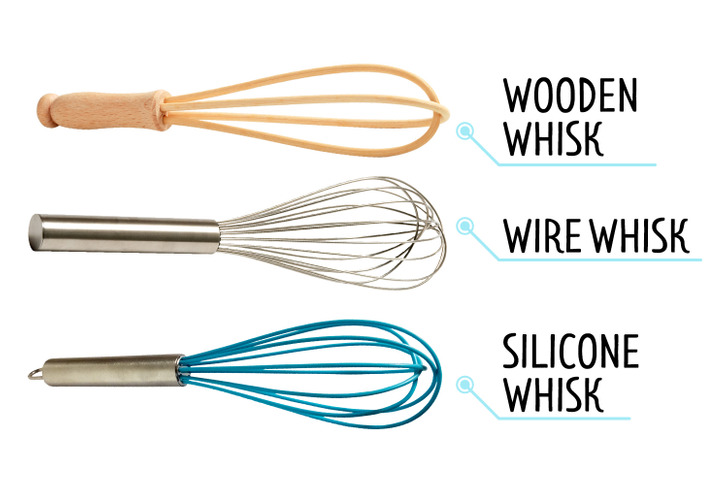10 Types of Whisks Every Kitchen Ought to Have
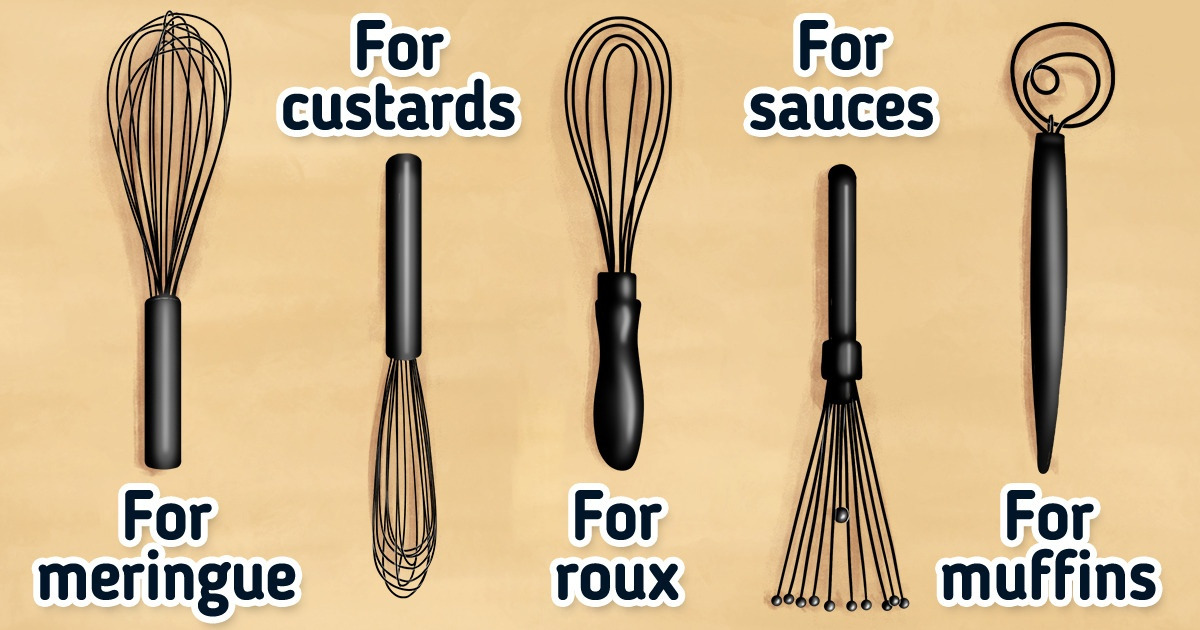
To most people, whisks are only necessary to use when baking a cake or beating eggs. But there are many varieties of whisks available, and each one of them has a purpose. They come in all kinds of materials, shapes, and sizes. If you’re curious about how these whisks can come in handy, let 5-Minute Crafts show you how they can make your cooking life easier.
A: whisk materials
- Wire whisks: This is the most popular kind of whisk and is usually made of metal loops of different sizes as well as thicknesses. Some varieties are flexible, while others are sturdier.
- Wooden whisks: These whisks are made of flexible wooden pieces, preferably birch. They’re ideal for light whipping, particularly for baking.
- Silicone whisks: These wire whisks are coated with heat-resistant silicone. They’re ideal for non-stick pans since they will not scratch the coating, and their non-stick feature makes it easier to clean.
B: whisk styles
1. Balloon whisk
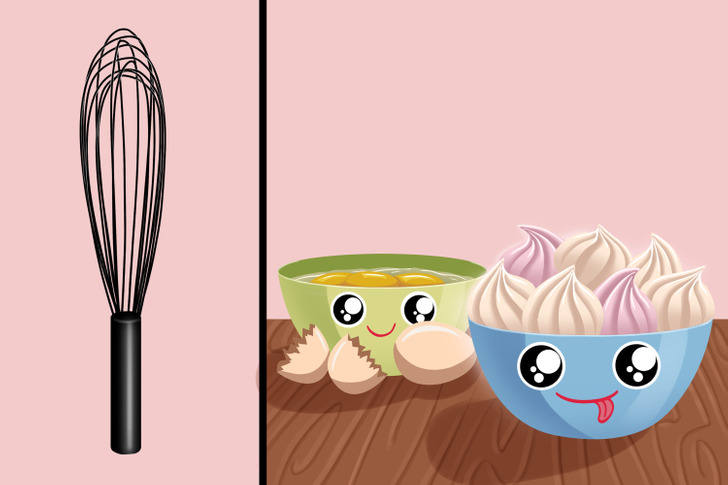
These are also called piano whisks, and they bear a bulbous end. These whisks are usually deemed everyday whisks, as they help with a lot of kitchen tasks. Their thin and flexible wires create more movement and add more air into the mixture while beating ingredients. They’re ideal for when you’re working with thin liquids.
Here are a few uses for balloon whisks:
- Whipping
- Beating eggs
- Making meringue
- Mixing dry ingredients
- Beating egg whites
2. French whisk
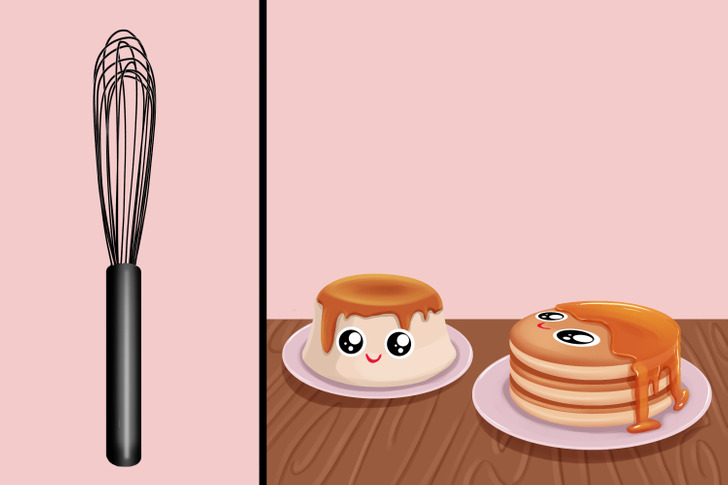
The French whisk is also called a whip and is similar to the balloon whisk. However, in appearance, it is longer and narrower. It bears overlapping flexible wires and its narrow features make it ideal for thicker sauces.
Here are a few things you can make using a French whisk:
- Various batters
- Sauces
- Pancakes
- Emulsifiers, like mayonnaise or vinaigrettes
3. Flat whisk
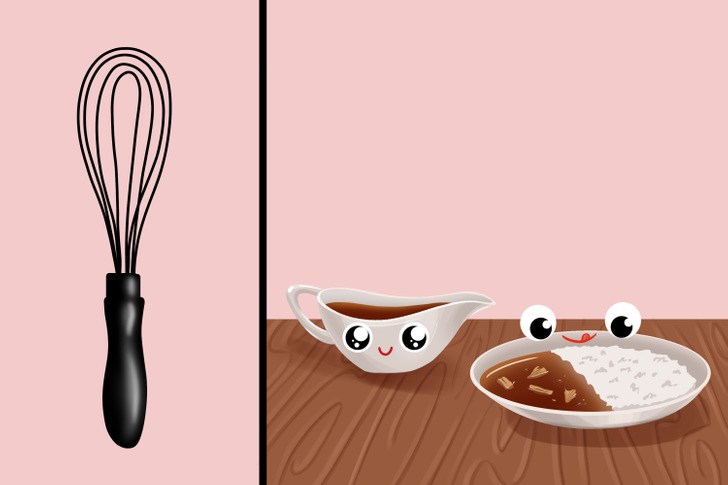
The flat whisk is also known as a roux whisk. It lives up to its name, as its wires lay flat, making it look more like a spoon, and it is ideal for stirring in shallow pans, like skillets. The lower the handle is to the pan, the flatter the whisk will be and the more surface area can be covered, helping you combine the ingredients more effectively.
Here are a few uses for a flat whisk:
- Making roux
- Making gravy
- Removing poached eggs from water
- Preparing sauces in shallow pans
- Serving as a fish spatula when removing fish from liquid
4. Spiral whisk
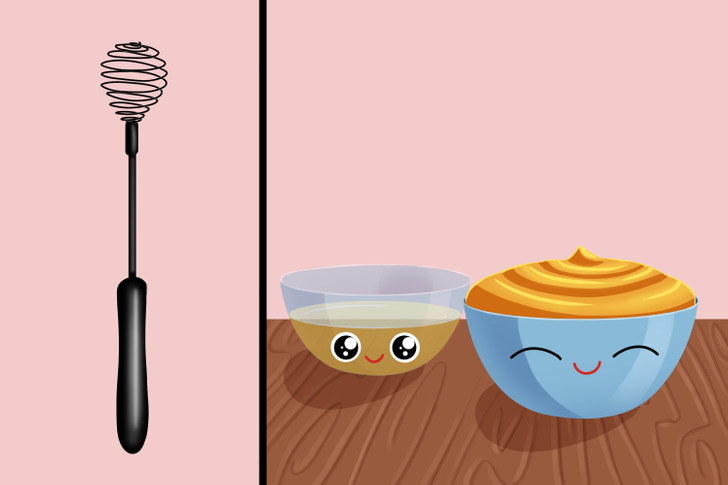
Spiral whisks bear a single wire loop covered in tight coils. The head of this whisk is also angled in a way that allows it to reach the bottom part of the pan or bowl to be in touch with all the ingredients, mixing them well, and preventing them from burning. The smaller coils break up lumpy ingredients well to create a smoother result.
Here are some of the things you can make using a spiral whisk:
- Sauces
- Gravy
- Roux
- Salad dressing
- Vinaigrette
5. Ball whisk
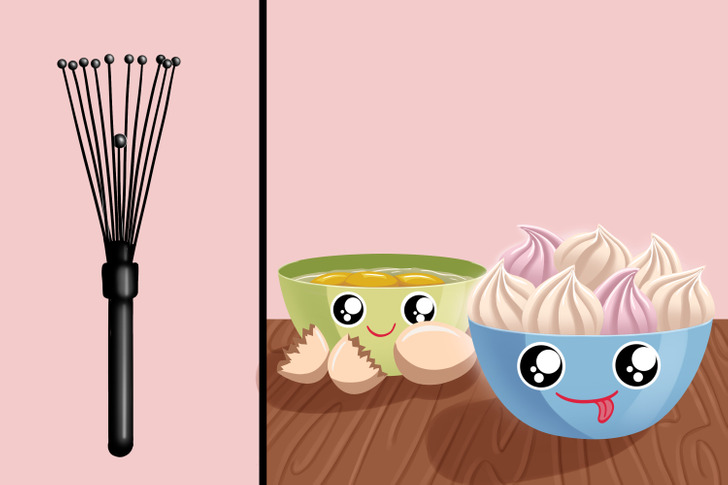
Ball whisks are also called kettle whisks. Here, you will find no loops, but each wire has a small ball at the end that acts as an aerator. In other words, this whisk helps in whisking more air into the mixture, and the long handles give you more freedom of movement when you mix ingredients in a kettle or stockpot. It also keeps your hand away from heat coming from stovetops. The best part about ball whisks is that they are easier to clean.
Here are a few uses for a ball whisk:
- Making soups
- Making sauces
- Whipping egg whites to make perfect meringues
6. Coil whisk
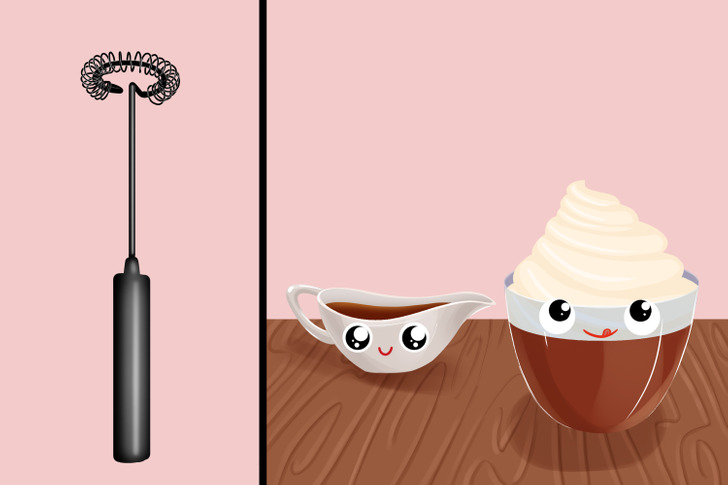
A coil whisk is rarely used but serves a unique purpose. Even though it is flat at the bottom, the wires coil into a small bulb. It comes in handy for breaking apart lumpy ingredients and is available in many sizes to mix things in cups or bowls of varying sizes. You can also use the coil whisk in a Mason jar.
Here are a few uses for a coil whisk:
- Making gravy
- Making chocolate milk in a cup
7. Cage whisk
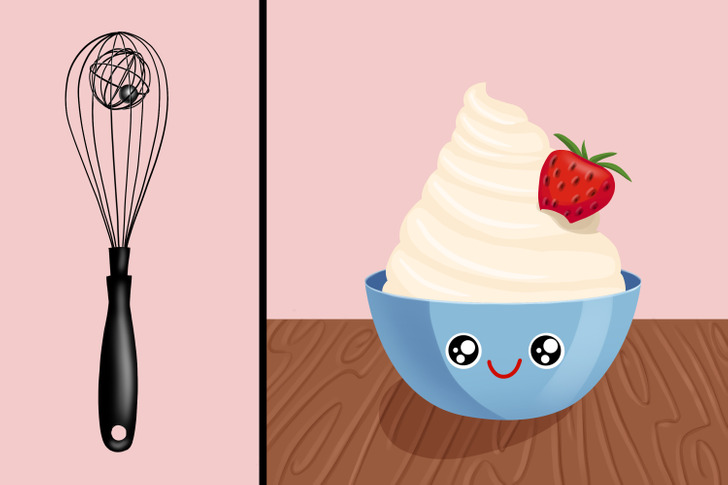
This whisk looks a lot like a balloon whisk that is equipped with a tiny ball-shaped wire cage bearing more looped wires. There is a ball that adds some weight inside the cage. The bulk of that inner cage lets you blend thick mixtures nicely to end up with a smooth and silky texture.
Here are the uses for a cage whisk:
- Whipping cream
8. Dough whisk
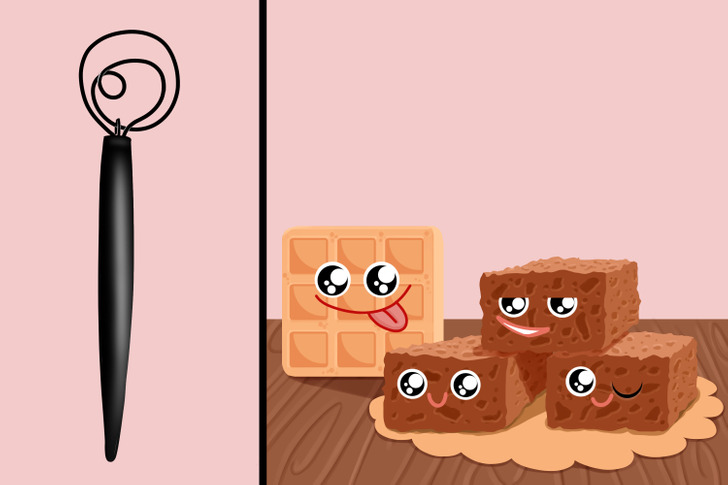
This is also called the Danish dough whisk. It features a thick wire that bears an outer circle and inner oval with a small loop. The wire cuts into the dough pretty swiftly and tears away the flour pockets for a smoother and consistent result. These whisks are ideal for handling tough doughs and batters and are used in bakeries, restaurants, catering businesses, etc.
Here are a few more things you can make using dough whisks:
- Muffins
- Waffles
- Brownies
- Scones
- Pancakes
- Irish soda bread
- No-knead bread
9. Conical whisk
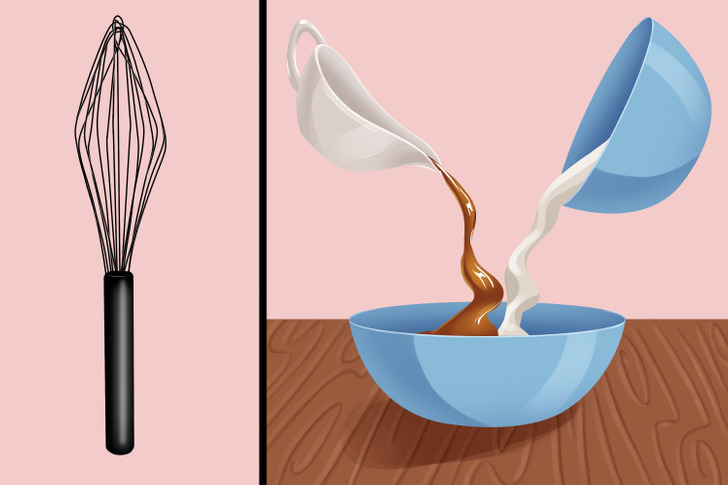
Here, the thin wires are arranged in an elongated way, where it has a wider middle and a narrow end. It looks like a diamond-shaped whisk and is meant to gather ingredients in the corners of your pots and pans. These can also be used as a substitute for scrapers and spatulas to mix your ingredients well.
10. Twirl whisk
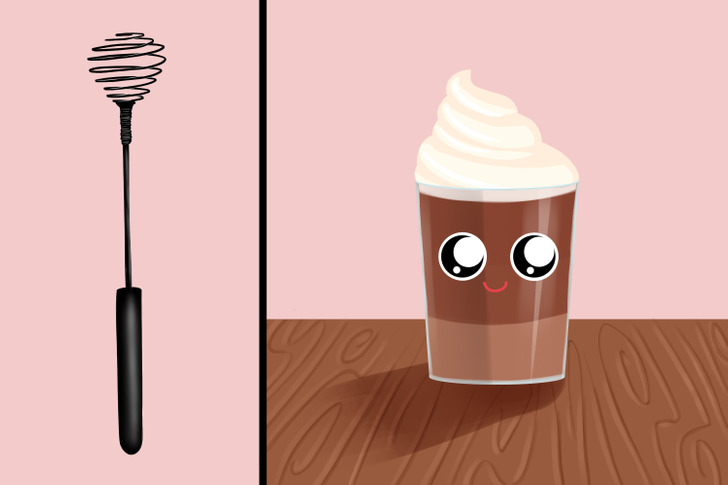
These whisks are commonly found in coffee shops. They help to froth to your drink and are commonly used to froth milk lattes. This whisk’s main use is for frothing beverages.
